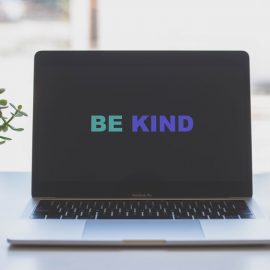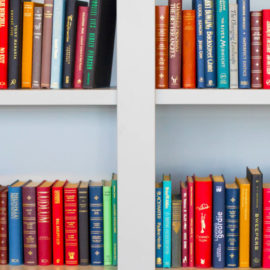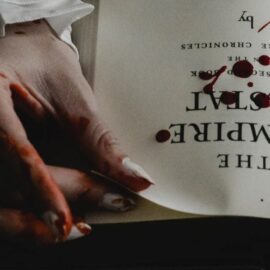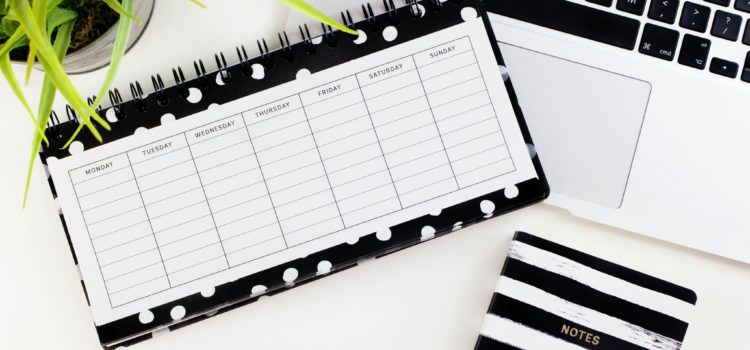
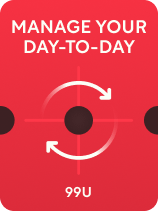
This article is an excerpt from the Shortform book guide to "Manage Your Day-to-Day" by 99U and Jocelyn K. Glei. Shortform has the world's best summaries and analyses of books you should be reading.
Like this article? Sign up for a free trial here.
Do you prioritize your creative projects, or are they always on the back burner? Do you treat your creative work as a marathon or just a scattered series of sprints?
Many creative professionals suggest that the first step to becoming more creative is prioritizing creative work. The best way to do this is to build a routine around your projects. Without an intentional creative routine, they argue, it’s unlikely you’ll ever make significant progress on your biggest and best ideas.
Keep reading to get tips from Mark McGuinness, Daniel H. Pink, Cal Newport, Gretchen Rubin, and Tony Schwartz on establishing a creative routine.
Step 1: Identify When You’re Primed for Creative Work
Poet and creativity coach Mark McGuinness suggests that your creative routine should center around your periods of highest focus. He explains that everyone has a circadian rhythm that determines your level of mental alertness throughout the day. He recommends aligning your routine with your energy level to ensure that you work on your creative projects at the times you’re most focused.
| How to Identify Your Focus Period In When, Daniel H. Pink goes into detail about how your circadian rhythm, your natural sleep/wake cycle, impacts your focus. He explains that, over the course of a day, most people experience a predictable pattern of energy: a crest (what Pink calls a peak), a slump (a trough), and a recovery (a rebound). The crest is when most people are at their most focused. According to Pink, knowing your chronotype will give you greater insight into your daily rhythm (crest, slump, and recovery) and allow you to be more strategic about how you use your time. After learning more about your chronotype, Pink recommends adjusting your schedule accordingly. You can learn more about your chronotype here. |
The author of Deep Work, Cal Newport, advises that, after identifying your focus periods, you block them out in your calendar. Scheduling this time, as you would an important meeting, not only reminds you that time is saved for your creative work but also allows you to focus on those projects without interruption. He emphasizes that once you schedule your focus block, you shouldn’t allow anything to intrude, whether it’s phone calls, emails, or spontaneous interruptions.
(Shortform note: Your most important creative projects likely qualify as what Newport terms deep work—cognitively demanding tasks that require undistracted focus. In Deep Work, he elaborates on four ways to schedule your focus blocks for deep work, depending on your preference, lifestyle, and other obligations.)
Step 2: Be Consistent
Once you establish a routine, be consistent. According to Gretchen Rubin, author of The Happiness Project and The Four Tendencies, creativity thrives on consistency. She explains that consistency works because it’s realistic, allowing you to work on your creative projects a little bit every day while also managing your other personal and professional responsibilities.
Rubin adds that consistency isn’t only realistic, but it also fuels creativity. Working on a project a little bit every day keeps ideas fresh in your mind and makes it easier to start work every time. It also alleviates pressure and anxiety by ensuring steady progress and fosters a more playful mindset, increasing the likelihood of inspiration striking regularly. The beauty of consistency is that it’s self-reinforcing because consistently working on a project strengthens your belief in your ability to make progress on your creative work, instilling a sense of accomplishment and fueling your motivation to keep going.
Step 3: Make Time for Rest & Rejuvenation
As you develop a consistent routine, many contributors emphasize the importance of incorporating periods of rest. This means not only having boundaries to your work day to avoid burnout and ensure adequate sleep but also incorporating smaller breaks throughout your day. Tony Schwartz, CEO of The Energy Project, suggests taking a break every 90 minutes of work to ensure peak productivity.
(Shortform note: Integrating regular breaks into your work routine is essential for maintaining optimal brain function and overall well-being. Numerous studies have found that without regular breaks, your brain can become fatigued, leading to decreased cognitive abilities and impaired decision-making. Additionally, prolonged work without breaks can increase stress levels and cause physical discomfort.)
Exercise: Develop a Routine to Support Your Creative Work
Creativity experts suggest that the first step to becoming more creative is prioritizing creative work by building a routine around your creative projects.
- Based on your preferred sleep patterns (your circadian rhythm), what time of day is your period of highest focus (morning, afternoon, evening, or nighttime)? On a normal day, how do you typically spend this time?
- Reflect on your current schedule. How much time do you currently spend on your creative projects?
- Are you satisfied with the amount of time you currently dedicate for creativity? If not, what’s one change you could make to your schedule that would help you to make more room for your creative projects during your period of highest focus?

———End of Preview———
Like what you just read? Read the rest of the world's best book summary and analysis of 99U and Jocelyn K. Glei's "Manage Your Day-to-Day" at Shortform.
Here's what you'll find in our full Manage Your Day-to-Day summary:
- That creativity is the result of disciplined work habits, not innate genius
- Tips from experts on how to boost your creativity, focus, and productivity
- Why you should never strive for creative perfection


